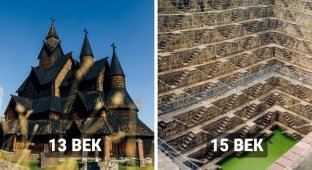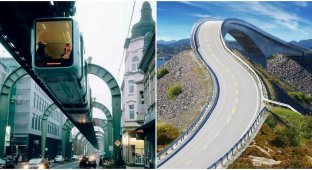Aqueduct of Segovia: a miracle, created without interruption (12 photos + 1 video)
Imagine a giant stone structure built 2,000 years ago that still works. And all without a single drop of mortar. 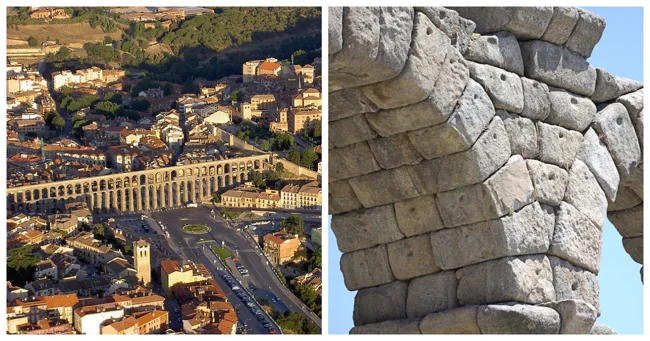
This is not fiction, but reality - the aqueduct in Segovia, Spain, one of the most impressive engineering wonders of the Roman Empire. 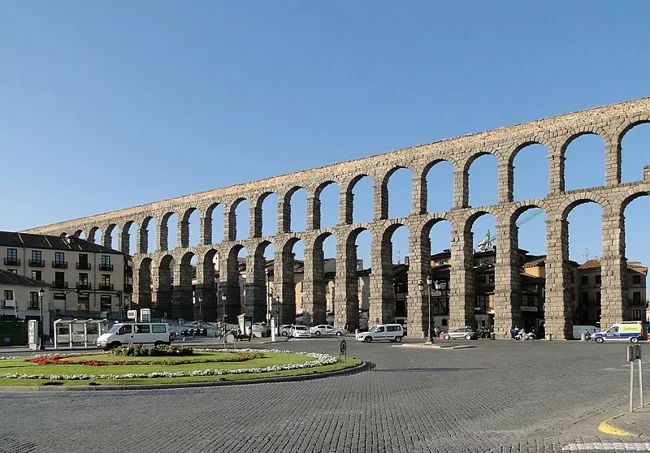
Located just 100 kilometers northwest of Madrid, Segovia was inhabited by the Celts, but its fame came after the city fell under Roman rule around 80 BC. It was the Romans who made Segovia an important commercial and administrative center, and one of its main symbols was the majestic aqueduct. 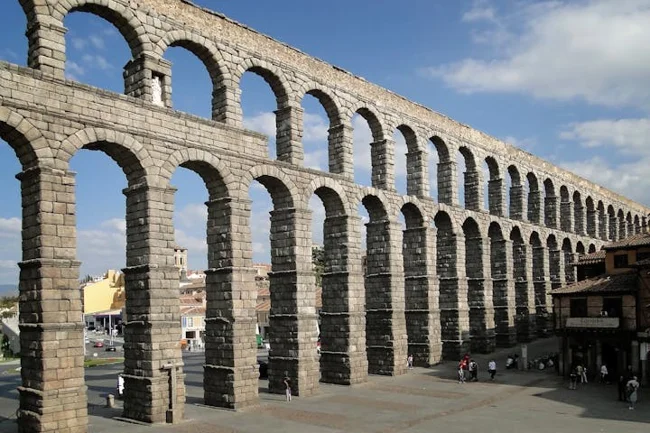
It's hard to imagine, but this giant aqueduct, almost 30 meters high and over 700 meters long, was built without the use of mortar. Only carefully processed granite blocks, perfectly laid on top of each other. 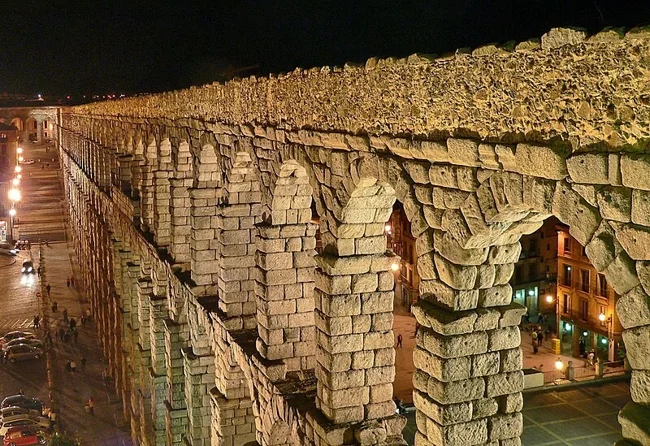
Each block weighs between one and two tons. Wooden cranes were used to lift them - traces of their work can still be seen in special holes in the stones. Over time, the edges of the blocks became softer and rounder - this is how the weather left its name on the ancient monument. 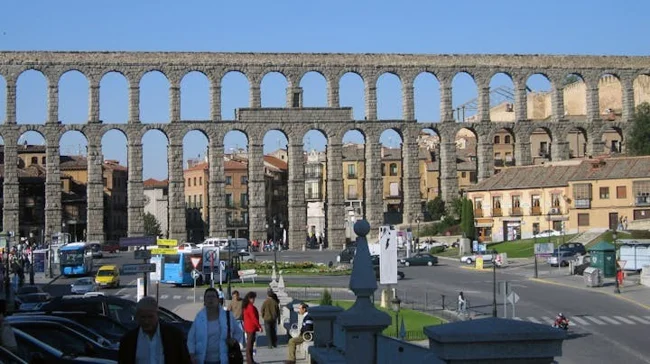
The exact date of construction remains a mystery - the inscriptions that could indicate it have been erased from the stones. But archaeologists are inclined to believe that the aqueduct was erected around the beginning of the 2nd century AD, during the reign of the emperors Trajan or Hadrian. 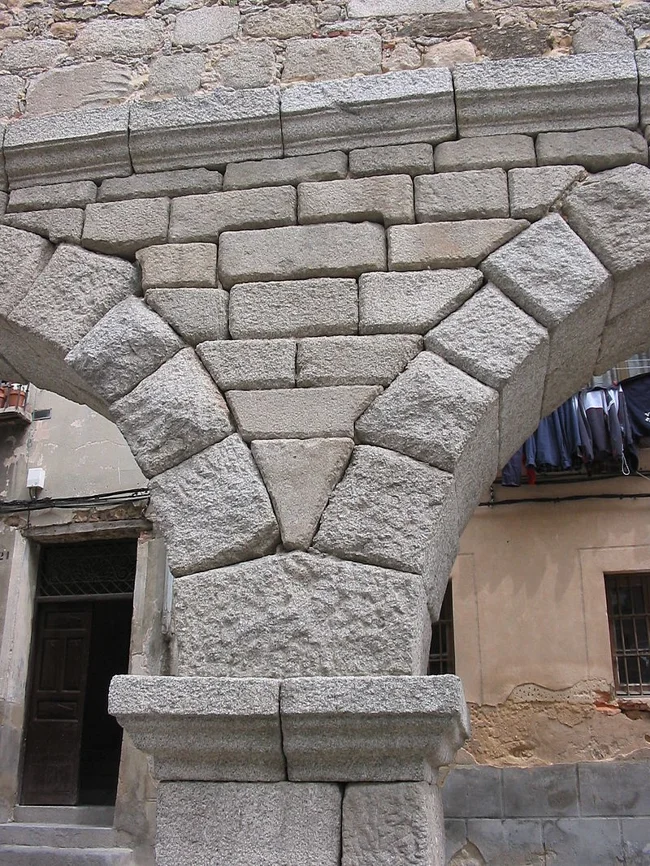
The water came from the Frio River, 17 kilometers from the city, through an underground channel. In a large reservoir (called El Caseron), the water settled and was purified before it continued through the house of water, Casa de Aguas. It then flowed through an open section of the aqueduct and, after traveling 728 meters, reached the Plaza Diaz Sanz.
Arches that defy time 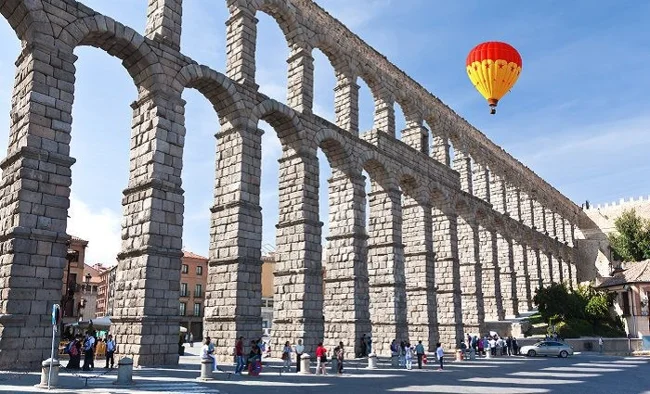
The section of the aqueduct above the wide Diaz Sanz square is particularly impressive. The high double arches supported by massive columns create an effect of lightness and power at the same time - like a stone canoe hovering above the ground. 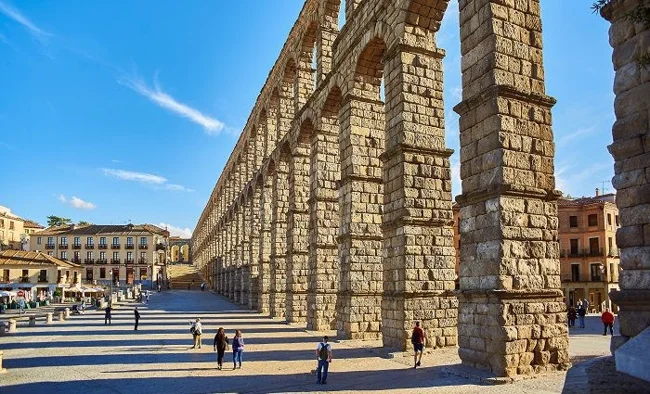
Interestingly, it was the absence of mortar that played a role in the longevity of the structure: the structure could “play” a little during earthquakes, while maintaining its integrity. 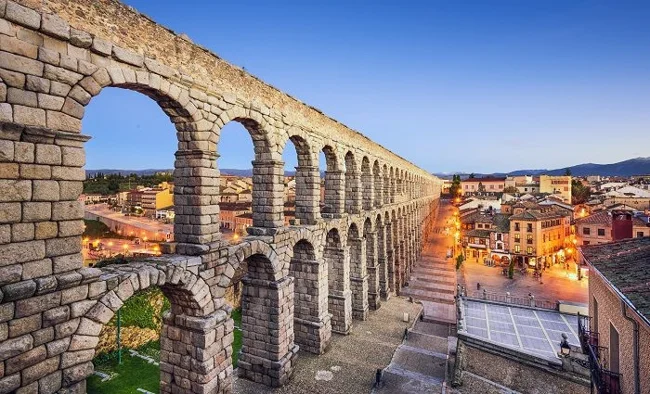
Once upon a time, the three highest arches had bronze plaques with inscriptions indicating the name of the master and the year of construction. Today they have disappeared, but niches have been preserved — one on each side of the aqueduct. 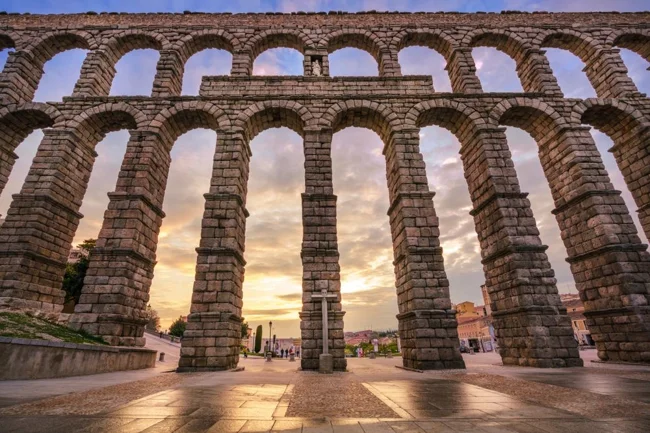
Previously, one of them housed Hercules, who legend calls the founder of Segovia. Now there is a statue of the Virgin Mary there. The second niche has remained unanswered by history. We will never know who stood there before. 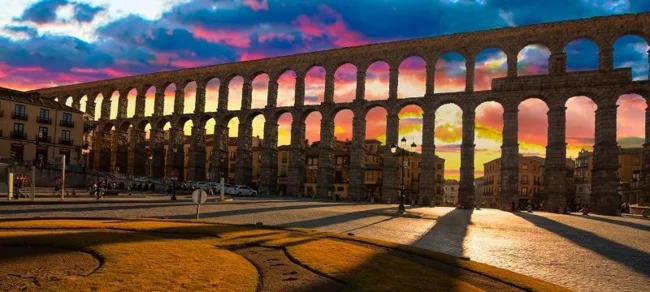
The aqueduct served faithfully for centuries. But it was not without losses:
In the 11th century, the army of Yahya ibn Ismail Al-Mamun destroyed 36 arches. Some of the stones were used to build the castle of King Alfonso VI.
In the 15th century, the damaged parts were restored, carefully preserving the style of the original.
At the beginning of the 19th century, all the houses adjacent to the aqueduct were demolished to strengthen the structure. 
Despite its strength, today the aqueduct has become vulnerable. The constant movement of water has caused leaks, and car exhaust fumes are destroying the granite. Since 2006, the aqueduct has been protected by the World Monuments Fund and is included in the list of "Monuments in Danger".
The Aqueduct of Segovia is not just an old building. It is a living proof of the skill of Roman engineers, the boldness of thought and precision of execution. It stands not only on its granite blocks, but also on the trust of generations who have cared for it, restored it and were inspired by it.














